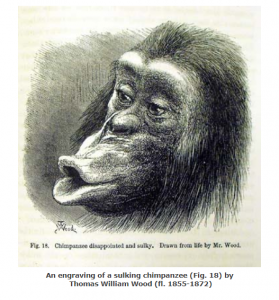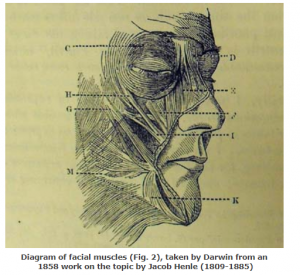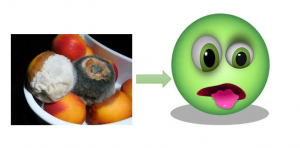Chapter 3: Basic Emotion Theory and Social Constructivist Theory
Basic Emotion Perspective
Basic Emotion Perspective
Basic Emotion Theory: A Categorical Approach
The basic emotion approach uses a categorical approach to understand emotions. A categorical approach means that the goal is to identify separate groups or categories of emotions. Within basic emotions, the term discrete emotion (or distinct emotion) means that this emotion represents its own category. For example, basic theorists view fear, anger, and disgust as three separate discrete emotions. Rage, annoyance, and anger would be feelings that could be categorized within the discrete emotion anger. It is important to note that discrete/distinct emotions can be either universal and basic or socially constructed.
According to basic emotion theory, humans and animals experience discrete categories of each emotion because each emotion is an adaptation that developed to solve an adaptive problem. For instance, over time via evolution, the discrete emotion of fear developed as a mechanism to avoid danger and enhance the survival of our genes. According to basic emotion theories, each discrete emotion solves a unique adaptive problem. Table 1 below provides examples of discrete basic emotions and the adaptive problem the emotion might have evolved to solve.
Table 1
Adaptive Problems Solved by each Discrete Emotion
|
Discrete Emotion (i.e., the adaptation) |
Adaptive Problem |
|
Fear |
Avoiding Danger |
|
Disgust |
Avoiding or Expelling Poisonous Food |
|
Anger |
Managing a Physical Threat in Environment |
|
Guilt |
Avoiding rejection from group due to violation of moral/social norms or maintain group membership |
|
Embarrassment |
Avoiding Rejection from group due to social conventional violation and communicating awareness of violation |
|
Joy |
Seeking valuable mates |
Paul Ekman was one of the first psychologists to apply Darwinian theory to human emotion. According to Ekman and Cordaro (2011), two criteria must be met for a construct to be considered a basic emotion. First, the construct must have evolved in our past to solve an adaptive problem. Because people of all cultures would have experienced the same adaptive problems, emotions should be universal. Universal means that for a specific emotion, the four emotion components must change in the same way across all cultures. The second requirement is that the emotions are discrete and categorical. Because each emotion developed to solve a unique adaptive problem, each discrete emotion should be comprised of unique changes in the four components. For instance, the component changes for fear (e.g., screaming, running away) should be different from the component changes for anger (e.g., insulting someone, attacking, approaching).
Yale Expert Interview: Paul Ekman
*The below video is an interview conducted with Paul Ekman. In the beginning of the video he discussed how he came up with his ideas on measuring facial expression of emotion and how he and Friesen developed the FACS. Around 17:00 minutes, he discussed his theory on the universality of emotion and his work with the Fore tribe of New Guinea.
Darwin’s Evolutionary Theory of Emotions
In 1872, Darwin published The expression of the emotions in man and animals. (See images below for photographic excerpts from his book). Darwin (1872) was the first person to discuss how emotions might be evolutionary adaptations. In his work, Darwin identified three principles to explain how emotions developed. Using the discrete emotion disgust, we are going to focus on one of his principles called the Principle of Serviceable Associated Habits. In certain situations, Darwin believed animals, including humans, engaged in controlled, voluntary movements because the movements helped them to solve a problem. Using disgust, this voluntary movement may be spitting out food or sticking one’s tongue out after tasting rotten food. At this point, Darwin emphasized the behavior changes were voluntary and thus not yet automatic and not yet considered an adaptation. He said all people who passed down their genes would experience these same behavior changes in the same situation – the situation of eating rotten food. Over a looong period of time, Darwin explained, as people continue to exhibit the voluntary behaviors to rotten food, the behavior changes become an automatic habit. Darwin’s term habit is the same thing as an evolutionary adaptation. These habits or adaptations are genetically passed on to our offspring. Now, today, when we experience the emotion disgust we are motivated to automatically behave according to this learned habit. Remember, basic emotion theorists are looking for discrete, universal emotions. This means the behaviors, thoughts, and feelings subsumed within each emotion category should be different from other emotion categories because each emotion developed to solve a unique adaptive problem. In fact, Darwin himself believed humans and animals showed unique facial expression changes for each emotion.
For instance, in his book Darwin (Figure 1 below) shows a drawing of a disappointment facial expression in a chimpanzee. Figure 2 shows the human facial muscles Darwin identified as involved in an emotional expression. Finally, remember that James and Lange were heavily influenced by Darwin, and thus would have agreed with his theory of emotion.
Figure 1
Disappointment Facial Expression in Chimpanzee

Reproduced from The Expression of the Emotions in Man and Animals by C. Darwin, 1872, (The expression of the emotions in man and animals). Copyright 1872 John Murray.
Figure 2
Human Facial Muscles Involved in Emotional Expression

Reproduced from The Expression of the Emotions in Man and Animals by C. Darwin, 1872, (The expression of the emotions in man and animals). Copyright 1872 John Murray.
Figure 3
Moldy Nectarines Elicit Facial Expressions of Disgust

Moldy Nectarines Reproduced from “Moldy Nectarines,” 2006. Open Access. GNU Free Documentation License.. Retrieved from: “Volunteer Duty” Psychology Testing | Photo by Chris Hope AS… | Flickr
Disgusting Emoji Reproduced from “14 Free Vector Graphics of Disgusting” by Pixabay. Free from: Free Disgusting Vector Art – Download 18+ Disgusting Icons & Graphics – Pixabay
Today, basic emotion theory accepts evolutionary theory as the cause for emotions. In the past, the adaptive problem (eating rotten food) designed the emotion construct (disgust). Today, the adaptive problem (eating rotten food) elicits the emotion disgust. Basic emotion theory suggests that the adaptive emotion increased our gene survival by dealing with threats to reproduction (e.g., disgust helps us to avoid death) or by enhancing reproductive opportunities (e.g., joy encourages people to explore and meet new potential mates).
Four Criteria for a Basic Emotion
Four criteria must be met for a construct to be considered a basic emotion. All of these criteria are derived from the assumption that emotions evolved to solve adaptive problems.
- All people and animals experience the same universal, discrete basic emotions.
- The emotion must lead to the same universal component changes in all people and animals. When experiencing an emotion, all humans and animals must show the same changes in behaviors and physiology. Further, all humans must report the same cognitive appraisals and subjective feelings. Further, the same eliciting event should cause the same emotion for all humans and animals.
- Humans and animals should express the emotion early in life because the emotion is inherited.
- Each emotion should cause a unique pattern of component changes in the emotion components because each emotion was designed to solve a unique adaptive problem. Further, if two separate emotions show the same change in component, then this would suggest those two separate emotions are actually the same basic emotion. For instance, some work has found that shame and guilt show the same changes in cognitive appraisals and physiology – which would suggest that shame and guilt might represent the same basic emotion!

